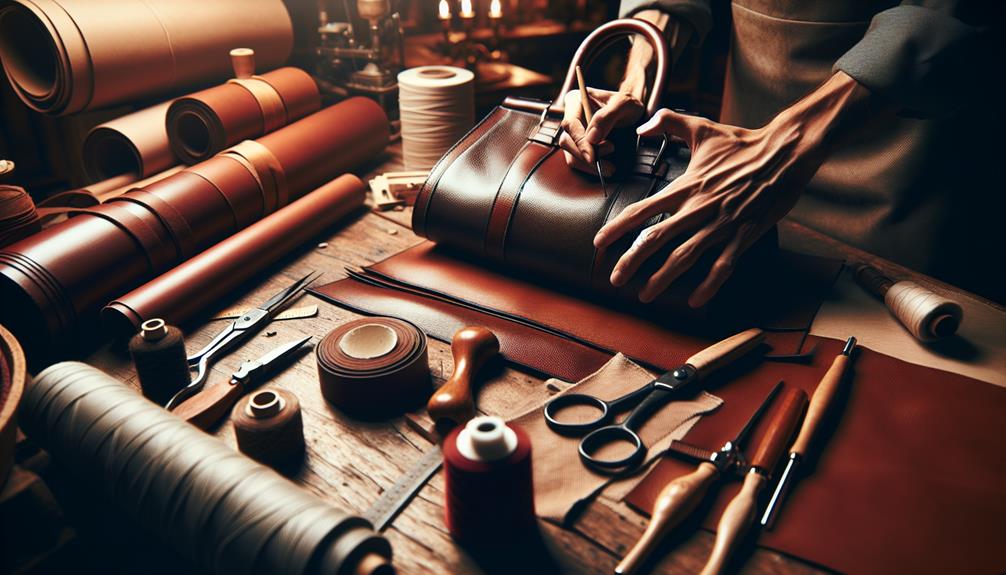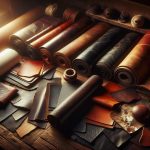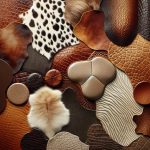I've always wondered why leather is seen as such a luxury. It's all about its history, superior craftsmanship, and unique aesthetic qualities. For centuries, from the Ancient Egyptians to modern times, leather has evolved from a practical to a prestigious material, symbolizing luxury especially since the Middle Ages. Its crafting involves meticulous techniques with high-quality materials like full-grain leather, ensuring durability and a stunning appearance that gets better with age. Plus, the rich textures and natural grain patterns scream sophistication. Curious about how all these elements combine to make leather stand out? There's more to uncover about its luxurious status.
Table of Contents
Key Takeaways
- Leather's luxury status is rooted in its historical use by elite societies and its continued association with high-end fashion.
- The meticulous craftsmanship involved in creating leather goods, including hand-stitching and careful tanning, ensures premium quality.
- Leather products feature unique grain patterns and rich textures that enhance their aesthetic appeal and distinctiveness.
- Due to its durability and ability to develop a patina, leather offers a sustainable luxury that ages beautifully and lasts for decades.
- Ethical sourcing and responsible production practices, as implemented by leading companies, add value and appeal to modern consumers.
Historical Significance of Leather
Leather's luxury and durability have made it a top choice for centuries, from ancient Egyptians to modern fashionistas. Delving into the history of leather, it's fascinating to see how it transitioned from a practical material to a luxury icon. Ancient civilizations recognized leather for its quality and natural resilience, crafting everything from armor to ornate sandals. By the time the Middle Ages rolled around, leather had become a definitive symbol of luxury. It wasn't just about utility anymore; it was about flaunting wealth and status.
The game-changer in leather's prestigious saga came with the advent of chrome tanning. This innovation drastically improved the efficiency and quality of leather production, cementing its role in luxury fashion. What was once a lengthy and labor-intensive process became quicker and even more robust, enhancing leather's allure among the elite. This technical leap contributed to leather's steadfast reputation as a top-tier material.
Today, when I think of luxury fashion, leather invariably comes to mind. Its rich history, combined with the advancements like chrome tanning, ensures it remains synonymous with sophistication and class.
Crafting High-Quality Leather
Building on its rich legacy, let's explore how high-quality leather is crafted. The process starts with selecting the finest full-grain leather, known for its durability and natural markings, which are essential for creating luxury leather goods. This type of leather not only gives the products a unique character but also ensures they remain timeless.
Skilled artisans, with years of experience, employ traditional techniques like hand-stitching and hand-burning to shape and detail each piece. These methods have been perfected over generations and are crucial in achieving the high standards expected in luxury leather items such as leather bags.
The meticulous tanning processes are another cornerstone in the crafting of quality leather products. This crucial step enhances the leather's strength, flexibility, and longevity, making sure that each item can stand the test of time. It's not just about making a product that looks good but also one that performs exceptionally well over years of use.
Craftsmanship in this field is truly about paying attention to the details. From reinforced stitching to the selection of top-tier hardware, everything is considered. This dedication ensures that each piece isn't just made, but thoughtfully crafted to be both functional and aesthetically pleasing.
Leather's Unique Aesthetic Appeal
Exploring the unique aesthetic appeal of leather, we notice its natural grain patterns and rich textures that truly set luxury products apart. There's something about the natural look of genuine leather that screams exclusivity. Each piece flaunts a visual richness that's not only appealing but also distinctly unique. This isn't just any material; it's a statement of elegance and class.
When I think about what makes leather such a staple in luxury goods, it's the way high-quality leather ages. The patina that develops over time isn't a sign of wear; it's a badge of premium leather's enduring appeal. It's like watching a piece of art mature, each crease and shade telling its own story.
Moreover, the tactile experience of leather is unmatched. The softness, the supple finish—it's what luxury brands bank on to deliver that feel of high-end indulgence. And let's not forget the sheen, that subtle luster that catches the light just right, enhancing the sophistication of items designed for those who desire the best.
In essence, leather's appeal is deeply rooted in its ability to blend durability with aesthetics, offering a product that's both beautiful and functional, perfect for those seeking something truly exclusive.
Durability and Longevity Benefits
I've found that the real value of leather lies in its incredible durability and longevity. When you invest in quality leather goods, you're not just buying a product; you're making a long-term investment. This sustainable luxury not only stands the test of time but also evolves, gaining character and beauty. High-quality leather, with its superior durability, outlasts nearly all synthetic materials, making it a top choice for anyone looking to 'buy less, buy better.'
The production process of natural materials like leather ensures that each piece is not only durable but also unique. Vintage leather items, for instance, tell stories through their patinas, which no other material can replicate. It's this blend of longevity and aesthetic that defines leather as a true luxury.
Here's a quick look at why leather is unmatched:
| Feature | Leather | Synthetics |
|---|---|---|
| Durability | Exceptional | Moderate |
| Aging | Gracefully | Quickly |
| Appeal | Increases | Decreases |
| Investment | Long-term | Short-term |
Clearly, the choice is straightforward. Opting for leather means embracing a piece that gets better with age, echoing the principles of both luxury and sustainability.
Ethical and Sustainable Practices
While we appreciate leather for its durability and aesthetic appeal, it's equally important to consider how it's sourced and produced. Delving into the leather industry, companies like Maydiang are setting the standard for ethical sourcing and responsible production. By aligning their practices with the stringent criteria of the Leather Working Group, where they've earned a Gold rating, they underscore a commitment to sustainability that's crucial in today's market.
Leather's potential for longevity means it offers more than just a temporary solution; it encourages less frequent replacements, fitting seamlessly into the concept of sustainable consumption. This durability doesn't just save costs over time but also aligns with the principles of a circular economy, where every product has extended life and utility.
Moreover, the by-products of leather production aren't wasted. These are repurposed, embodying the very essence of resource efficiency that a circular economy champions. And let's not overlook the role of proper care; maintaining leather products isn't just about preserving their aesthetic—it's about maximizing their lifespan, thereby reducing overall consumption and waste.
Frequently Asked Questions
What Makes Leather so Special?
Leather's unique for its durability, elegance, and ability to age gracefully. It's crafted with precision, embracing both historical significance and modern functionality, making it not just practical but a symbol of luxury too.
What Is a Luxury Leather?
Luxury leather's top-notch, crafted from the outermost hide layer, known for its durability and beauty. It's about superior craftsmanship and timeless design, elevating every piece to a symbol of status and sophistication.
Why Is Real Leather so Expensive?
Real leather's high cost stems from its complex production involving curing, tanning, and finishing. Craftsmanship and labor, plus the large water usage, significantly contribute to the price, especially for high-quality, full-grain types.
Why Is Leather Premium?
Leather's premium status stems from its durability, aesthetic appeal, and the meticulous craftsmanship involved. It's the top choice for lasting luxury due to its unique aging qualities and enduring softness.
- Why Is Red Velvet Not Red? - April 25, 2024
- How Do You Describe Velvet Fabric? - April 25, 2024
- How Strong Is Velvet? - April 25, 2024








